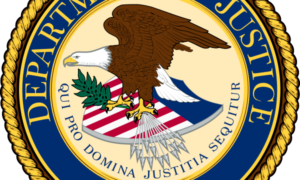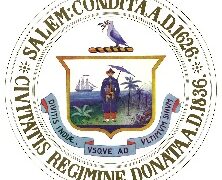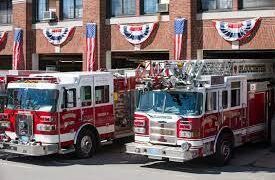DANVERS — Superintendent Heidi Riccio wishes to share the initial state guidelines from Gov. Charlie Baker and the Department of Elementary and Secondary Education (DESE) for the 2020-21 academic year, which will be modified as a result of the COVID-19 pandemic.
While prioritizing health and safety as well as getting as many students back in school as possible, districts across the state will now begin to develop three different plans: one for learning entirely in-person, one for a hybrid model that includes in-person and remote learning in the event in-person learning is not feasible due to space constraints and other concerns, and one for remote learning only should there be a second spike in COVID-19 cases regionally.
Several task forces for reopening were created in May to begin planning for the fall. Each task force, made up of administrators and staff, will play a significant role in the creation of the reopening plans to be submitted to DESE in the coming weeks. The final plan for the district will be announced in August.
Superintendent Riccio and Director of Career & Technical Education Jill Sawyer are working with the state’s vocational reopening team to develop and provide further guidance to adequately provide technical and academic education.
A survey will be sent to staff and families to determine their needs as the district moves forward with the reopening process.
Work also continues to renovate the facilities on the South Campus to provide additional classrooms for students. This work is being done as part of of a Massachusetts Clean Energy Center grant and will continue this summer using Cummings Foundation grant funding. Space will be available as needed to maintain social distancing.
“Prior to today’s announcement, we have already begun our work to develop multiple plans that will create authentic learning experiences for our students while maintaining appropriate safety protocols,” Superintendent Riccio said. “The health and wellbeing of students, faculty and staff is our priority, always, and we are working diligently to plan and prepare accordingly for the fall. We are fortunate that we have two campuses and additional classroom spaces to accommodate a reentry, and we will continue to update all of our stakeholders as plans progress.”
Guidelines that must be part of these plans include:
Setting up cafeterias, gyms, libraries and other large spaces to promote the greatest amount of social distancing possible.
Requiring students from second grade on, and all adults, to wear a face mask, face covering or face shield while learning in-person and while riding on the school bus. These should be provided by the student/family, but the district will have a limited amount of disposable masks to provide students who need them.
Providing other preventative measures for students and staff, such as hand washing stations and hand sanitizer, and cleaning frequently touched surfaces.
Having school nurses wear extra protection, such as face shields and goggles, when directly treating students. A room should also be designated to isolate those at the school who are suspected of having COVID-19.
Determining class size based on how many students can be taught with social distancing in place, with desks anywhere from three to six feet away from each other.
Strongly recommending that students, teachers and staff get their regular flu vaccine in order to prevent any disruption to learning. Administrators will also work with school nurses to look into expanding the annual staff flu clinic to include students as well.
Surveying families throughout the summer and possibly the school year to help with decisions such as which children will return to school in-person, technology needs of students learning remotely, and who will need bus transportation in order to get to school.
At this time, screening procedures to enter school buildings, such as taking a person’s temperature, will not be required. COVID-19 testing also will not be required for students to return to school.
Additional guidelines, including those for busing, will be released in July.
The initial guidelines, which can be read in full here, are also subject to change depending on how the situation surrounding the COVID-19 pandemic progresses. The guidelines were developed by DESE’s Return-to-School Working Group, along with experts from the fields of infectious diseases and public health.
Approximately $200 million from the Commonwealth’s federal Coronavirus Relief Fund is available to help with the costs of reopening public schools. Schools are eligible to receive up to $225 per student for eligible costs incurred due to the COVID-19 public health emergency, such as training for school staff, supplemental social and academic services, reconfiguration of school spaces, leasing of temporary facilities, and acquisition of health and hygiene supplies.
In partnership with legislative leadership, the state has also committed $25 million in federal funds for a matching grant program to help school districts and charter schools close technology gaps that have inhibited remote learning for students and families who lack access to computers or internet connections.
Specific state funding for each district will be determined at a later date.
The statewide closure of school buildings began in mid-March and was extended through the remainder of the 2019-20 academic year as an unprecedented step in limiting the potential spread of COVID-19 and continuing the practice of social distancing as more positive cases and deaths are announced in the state each day.






